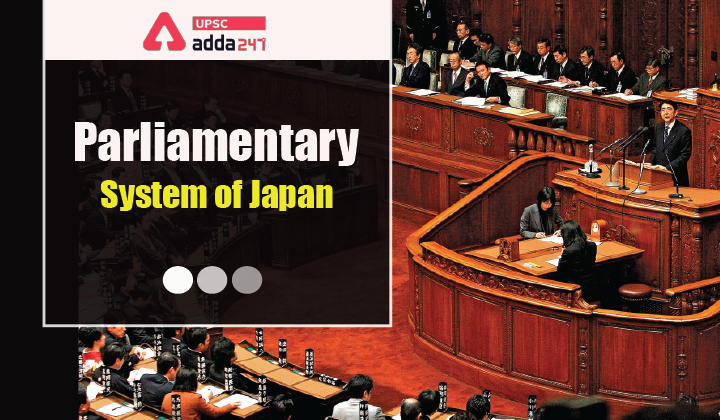Why in News:
- In the recently held Parliamentary elections in Japan, a big win was recorded for the ruling Liberal Democratic Party. The LDP secured more than 233 lower house seats – an absolute majority.
- The LDP has dominated Japanese politics for decades but was criticised for its handling of the pandemic.
- Earlier, Mr Kishida’s predecessor Yoshihide Suga quit after just a year in office.
- The resignation came amid plummeting poll ratings for the LDP following an unpopular push to continue with the Tokyo Olympics despite public concern about surging Covid-19 rates.
Constitutional Monarchy:
- Japan is a constitutional monarchy, with a parliamentary system of government based on the separation of powers.
- The Emperor is the symbol of the state and does not hold political functions, only performing ceremonial duties. Nevertheless, he can play a relevant diplomatic role.
- With Emperor Naruhito’s enthronement in 2019, following his father’s abdication, Japan has entered the Reiwa (beautiful harmony) age.
- The 2001 administrative reform strengthened the Prime Minister’s leadership in the cabinet. The Chief Cabinet Secretary also plays a relevant role.
Constitution:
- It has a unitary model with the supremacy of the constitution.
- The Constitution of Japan is the fundamental law of Japan, enacted on 3 May 1947.
- It is one of the very few democratic constitutions in the world having fundamental duties, apart from India.

Judiciary:
- The Supreme Court is at the top of the judicial system.
- It is not a constitutional court, despite handling appeals arising from actual disputes.
- The appointment of its Justices is reviewed by the people at the first general election of the Lower House following their appointment.
Unitary System
- Japan is a unitary state divided into 47 prefectures.
- A Metropolitan Government administers the capital, Tokyo.
Local Self Government
- Japan’s 1947 Constitution recognises ‘local self-government.’
- Local governments carry out many of the national policies and programmes.
- They have limited autonomy, also because of their dependence on financial resources from the central government.
Bicameral Parliament
- Japan has a bicameral parliament − the Diet.
- Although the two chambers share legislative powers, the Lower House (House of Representatives) prevails in the legislative process and is empowered to adopt the final decision on the budget and on the approval of international treaties.
- Changes in the regional geopolitical environment and in the country’s demographic structure have prompted debates on issues such as the revision of the ‘pacifist’ Article 9 of the Constitution and the seat distribution among electoral constituencies.
Women’s Participation in Active Politics:
- The lack of women in Japanese politics is striking, and not only among LDP ranks.
- Despite a 2014 pledge by Abe Shinzo, Japan’s longest-serving prime minister only a little has changed.
History of General Elections:
- The conservative LDP has governed Japan continuously since it was formed in 1955, except for two brief breaks adding up to four years.
- Japan has all the trappings of a democratic political system, such as opposition parties and regular elections. But it also has many barriers to a more diverse and modern political culture.
- Thirty per cent of LDP members of the last parliament were children or grandchildren – often both – of earlier LDP lawmakers. Prime Minister Kishida Fumio, who led the LDP into the elections, is himself the son and grandson of parliamentarians.



 TSPSC Group 1 Question Paper 2024, Downl...
TSPSC Group 1 Question Paper 2024, Downl...
 TSPSC Group 1 Answer key 2024 Out, Downl...
TSPSC Group 1 Answer key 2024 Out, Downl...
 UPSC Prelims 2024 Question Paper, Downlo...
UPSC Prelims 2024 Question Paper, Downlo...
